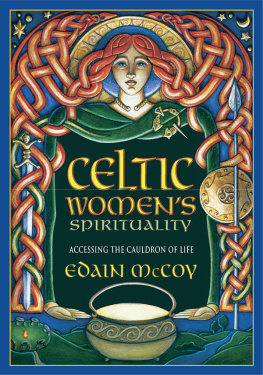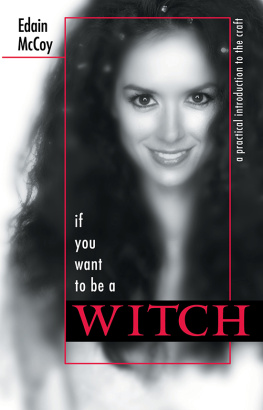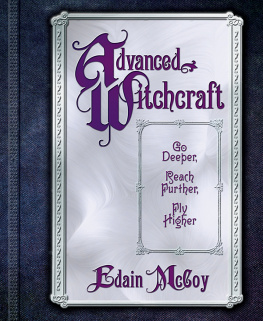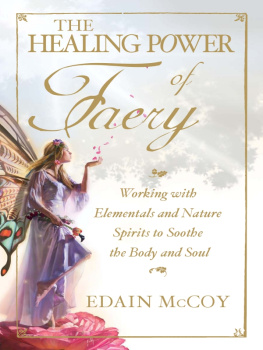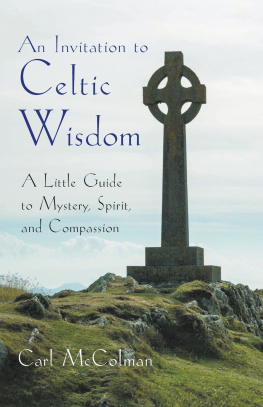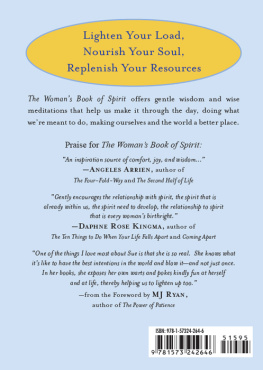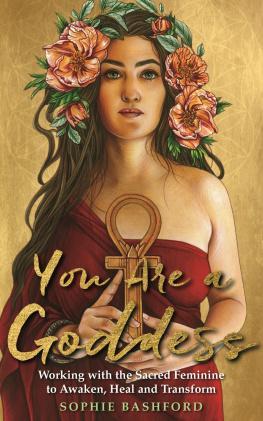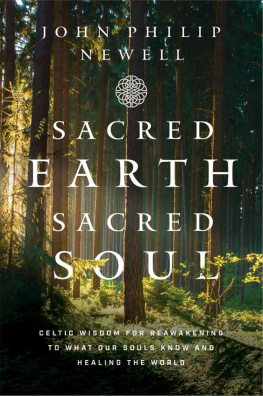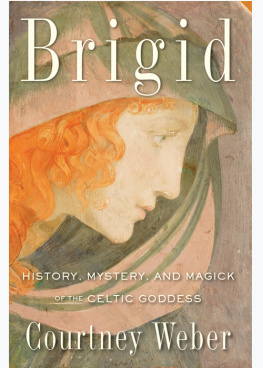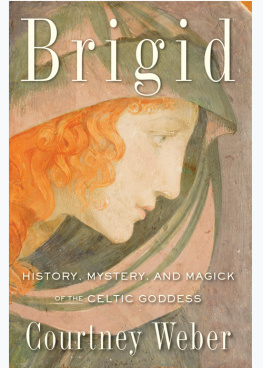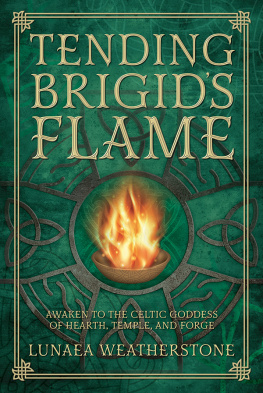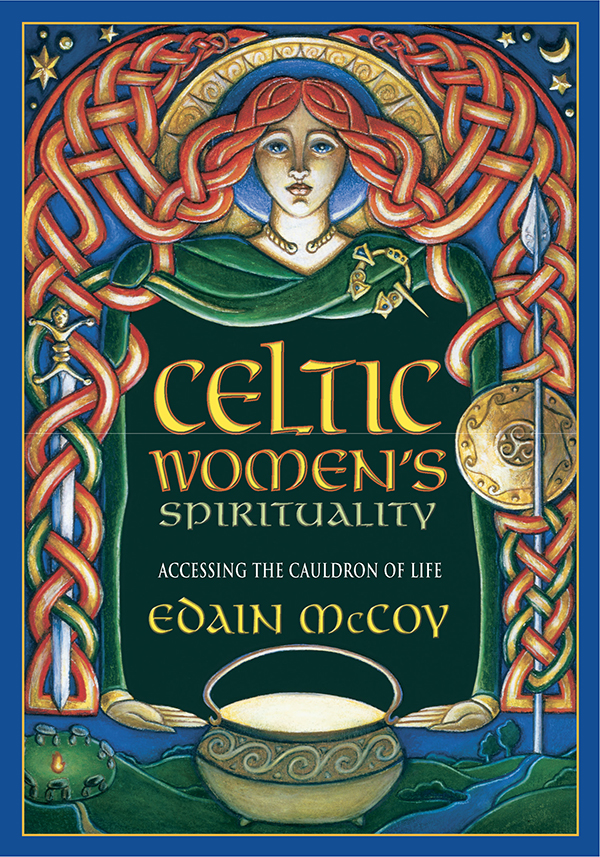
About the Author
Edain McCoy became a self-initiated Witch in 1981, and has been an active part of the Pagan community since her formal initiation into a large San Antonio coven in 1983. She has been researching alternative spiritualities since her teens, when she was first introduced to Ka ballah (Jewish mysticism). Since then, she has studied a variety of magickal paths, including Celtic Witchcraft, Appalachian folk magick, and Curanderismo, a Mexican-American folk tradition. Today she is part of the Wittan Irish Pagan tradition, in which she is a priestess of Brighid and an elder. An alumnus of the University of Texas with a B.A. in history, she currently pursues part-time graduate and undergraduate studies at Indiana University as her schedule permits. She is also active in several professional writers organizations, and occasionally presents workshops on magickal topics, or works individually with students who wish to study Witchcraft. This former wood-wind player for the Lynchburg (VA) symphony claims both the infamous feuding McCoy family of Kentucky and Sir Roger Williams, the seventeenth-century religious dissenter, as branches on her ethnically diverse family tree.
Copyright Information
Celtic Womens Spirituality 1998 by Edain McCoy.
All rights reserved. No part of this book may be used or reproduced in any matter whatsoever, including Internet usage, without written permission from Llewellyn Publications, except in the form of brief quotations embodied in critical articles and reviews.
As the purchaser of this e-book, you are granted the non-exclusive, non-transferable right to access and read the text of this e-book on screen. The text may not be otherwise reproduced, transmitted, downloaded, or recorded on any other storage device in any form or by any means.
Any unauthorized usage of the text without express written permission of the publisher is a violation of the authors copyright and is illegal and punishable by law.
First e-book edition 2017
E-book ISBN: 9780738748542
Book design by Rebecca Zins
Cover art by Moon Deer
Cover design by Anne Marie Garrison
Editing and typesetting by Marguerite Krause
Llewellyn Publications is an imprint of Llewellyn Worldwide Ltd.
Library of Congress Cataloging in Publication
McCoy, Edain, 1957
Celtic womens spirituality: accessing the cauldron of life / Edain McCoy.1st ed.
p. cm.
Includes bibliographical references and index.
ISBN: 978-0-7387-4723-1
1. Magic, Celtic. 2. Mythology, Celtic. 3. Goddesses, Celtic.
4. Goddess religion. 5. WomenReligious life. I. Title.
BF1622.C45M34 1998
299.16082dc21 97-45110
CIP
Llewellyn Publications does not participate in, endorse, or have any authority or responsibility concerning private business arrangements between our authors and the public.
Any Internet references contained in this work are current at publication time, but the publisher cannot guarantee that a specific reference will continue or be maintained. Please refer to the publishers website for links to current author websites.
Llewellyn Publications
Llewellyn Worldwide Ltd.
2143 Wooddale Drive
Woodbury, MN 55125
www.llewellyn.com
Manufactured in the United States of America
Celtic
Womens
Spirituality
Accessing the Cauldron of Life
Llewellyn Publications
Woodbury, Minnesota
This book is dedicated with much love to the memory of my
teacher, mentor, friend,
and favorite warrior woman
MOLLIE SIOBHAN MALONE
1939-1991
Contents
Women in Celtic Society
The Feminine Mystery Cults
Entering the Sheila-na-Gig: Guided Meditation
The Warrior and Her Goddesses
The Dedication of the Warrior: Solitary Ritual
The Celtic Triple Goddess
The Threefold Blessing: Group Ritual
The Virgin
The Mother
The Crone
The Art of Ritual Drama: Re-discovering Celtic Mythic Teachings
The Divine Sovereign
Magick and Witchcraft
Feminine Celtic Shamanism
lmmrama: Entering the Otherworld
Voyage to Tir na mBan: Guided Meditation
A Celtic Womans Wheel of the Year
Becoming Priestess
Self-Initiation of the Celtic Priestess: Solitary Ritual
The Bonding of Soulfriends: Ritual forTwo
Living as a Celtic Woman
: Celtic Goddesses and Women of Power
: Celtic Goddess Symbolism, Functions, and Correspondences
: Opening and Closing the Ritual Circle as a Celtic Solitary
: Basic Ritual Format
: The Art of Guided Meditation
: Resources For Womens Spirituality and Celtic Magickal Living
: Works Consulted and Cited
The Celtic woman walks in peace, but unobtrusively carries her battle weapons; she sees herself as part of the web of all creation, but also as a unique individual of great worth. She loves and respects her family, friends, and community, but also finds inspira tion in her solitude. She is a leader, but knows when it is time to let others show the way. She strives to learn and to teach, to share and to keep secrets, to change and yet to remain her self, to be human and be Goddess.
The planet needs more Celtic women, whose bottomless cauldron of inner strength serves as a womb from which a new and better world may be born.
Introduction
The Celtic spiritual traditions are arguably some of the most popular in the modem Pagan revival. One explanation for this phenomenon is that in the United States and Canada, where a large percentage of todays Pagans reside, the ancestral gene pool is pri marily Celtic. Perhaps our interest is one of ethnic pride, or perhaps it is a deeper intrigue born of genetic memory. Women have also flocked to the new spiritualities seeking divine images to which we can better relate, deities who are like ourselvesfemale! We call this path womens spirituality, yet we rarely give it a single cultural focus.
The term spirituality is often preferred over the label religion by practitioners of alternative worship. Some Pagans balk at the use of the word spirituality, feeling it casts what they believe and practice into a lesser role. This is simply not true. A religion is a broad framework in which spirituality may or may not play a part. A religion, properly defined, is a set of beliefs, a dogma with a definable and static outward form. It has little or nothing to do with inner connections to the divine. Catholicism is a religion. Judaism is a religion. Islam is a religion. Even Paganism, in its broadest sense, is a religion. How many non-practicing people do you know who nonetheless claim a religious label but who seem to feel nothing for the deeper meaning of the faith to which they so tenaciously claim allegiance?
For the majority of English-speaking people, the word religion has come to mean a set of unnatural rules for living. One book on Paganism defines religion as that which is taboo or restrictive. The word religion actually comes from the Latin reUgio, meaning to re-link. Ligio is the same root word from which we get the word ligaments, those tissues that link bone and muscle and allow our bodies to move. There is nothing in it that means taboo. However, languages evolve over time, and the word spirituality now strikes most of us as the term that best sums up the idea of re-linking ourselves with the divine. It is the divine to which we aspire to reconnect through ritual, and in the rituals of womens spirituality it is almost exclusively an aspect of the Goddess to which we desire to re-link ourselves.
Spirituality is an inner quality that speaks to our feelings about our faith. Spirituality can be either coexistent with the practice of any religion (by proper definition) or celebrated outside of orthodox religious forms altogether. It implies an active role in religious life that goes beyond outer expressions, attempting to take the mysteries of the faith and fully incorporate them into all aspects of the self, uniting that self with the divine.
Next page
